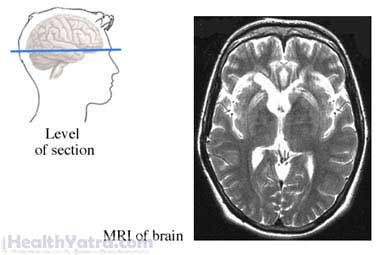Definition
Nystagmus is a type of involuntary movement of the eyes. It is usually side-to-side, but sometimes is up and down or in a circular fashion in the case of rotatory nystagmus. The movement varies between slow and fast and usually involves both eyes. In infancy, it tends to develop between six weeks and three months of age and is called infantile nystagmus. It can also be acquired later in life and is called acquired nystagmus.
Causes
The direct cause of nystagmus is instability in the motor system that controls the eyes. There are a number of different causes of this instability, including:
- Heredity
- Poor development of eye control that may be caused by an eye disease or visual problem during infancy, such as bilateral optic nerve hypoplasia or congenital cataracts
- Albinism —lack of skin pigmentation
- Eye disorders, such as optic nerve degeneration or severe astigmatism ornearsightedness
- Diseases of the body, such as Meniere’s disease which involves balance problems,multiple sclerosis, spasmus nutans, or stroke
- Injury to the head or involving the body’s motor system
- Use of certain medications, such as lithium or antiseizure medications
- Alcohol or drug use
- Inner ear problems, such as infections, irritation, benign paroxysmal positional vertigo, some brain tumors
- Any disease that can also affect the brain
In some cases, the cause of nystagmus is unknown.
Risk Factors
Factors that can increase your chance of developing nystagmus include:
- A family member with nystagmus
- Albinism
- Eye disorders such as optic nerve degeneration, severe astigmatism, or nearsightedness
- Diseases of the body such as Meniere’s disease, multiple sclerosis, or stroke
- Injury to the head or involving the body’s motor system
- Use of certain medications, such as lithium or antiseizure medications
- Alcohol or drug use
- Infection of the inner ear
Symptoms
Other symptoms besides the eye movements may include:
- Sensitivity to light
- Difficulty seeing in darkness
- Vision problems
- Head held in a turned position
- Oscillopsia—feeling that the world is shaking or moving
- Vertigo
Diagnosis
Your doctor will ask about your symptoms and medical history. A physical exam will be done. If nystagmus seems to be present, you may need:
- A full exam with an eye specialist called an ophthalmologist
- An ear exam, including a hearing test
- Exam with a neurologist or other medical specialist
Tests may include the following:
- You may need tests of your eyes. This can be done with:
- Visual exam of the inside of the eye with an ophthalmoscope
- Vision testing
- Eye movement recordings
- Images may need to be taken of your brain. This can be done with:
- Computerized tomography (CT)
- Magnetic resonance imaging (MRI)

The ophthalmologist will also look for other eye problems that may be related to the nystagmus, such as strabismus, cataracts, or abnormality of the optic nerves or retina.
The ear specialist will look for signs of ear infection, and for worsening of the nystagmus with head positions.
Treatment
Talk with your doctor about the best treatment plan for you. Removal of the cause of nystagmus can sometimes eliminate the problem, for example discontinuing a medication or stopping alcohol or drug use. However, nystagmus often is a permanent condition that can only be reduced and not eliminated. Treatment options to reduce nystagmus and improve vision include the following:
- Prisms, tints, eyeglasses, or contact lenses
- Adopting a particular angle of vision where the nystagmus is reduced, such as holding the head in a certain position
- Vibratory stimulation of the face and neck
- Certain medications for certain types of nystagmus, including botox (botulinum toxin) injections to relax the eye muscles, muscle relaxants, and certain anti-seizure medications
- Surgery on the eye muscles
Low-vision aids can often help improve vision. They may include large print or high contrast materials, good lighting, and magnifying devices.
Prevention
There is no known way to prevent nystagmus.
